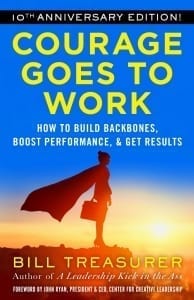3 Core Differences Between a Boss and a Leader

What a Boss is
Simply put, some bosses are just a boss. They have attained a position in the management section of the corporate world with a nice office and a designated parking space. They sit back behind their desks and make decisions that affect the direction of the company and often dictate how money is spent. Although these aspects are needed, they are not enough to make the people holding those positions leaders. Fortunately, a boss can become a leader by learning the differences and applying them to the job.
Leading, Rather Than Pushing
Leaders motivate their employees and find practical solutions together to make sure the employees are inspired and follow their leader’s example. Bosses tend to push employees into doing something without really giving them much guidance. This not only forces employees to work without having clear directions, but the results will most likely be less than favored. A good leader will present ideas and work alongside their employees to demonstrate that communication is key and working together to achieve goals as a team is the way to succeed.
Leaders Listen
A good leader spends time listening to their employees instead of talking above them. True leaders see the value of asking employees about their opinions and incorporating those opinions into the decision-making process. On the other hand, a boss will dominate the conversation while expecting employees to listen attentively and carry out commands while giving them little or no direction. Listening will build a team of engaged employees who know they are valued for their skills and knowledge and will want to work harder and more efficiently to complete projects.
Invest Time in Their Employees
Some bosses tend to ignore the majority of their employees, giving those employees the sense of an uncertain future within the company. A leader does not ignore an employee. They invest time and effort in helping each employee develop in their profession, teaching them new skills and allowing them to advance in their careers. Not only that, but a leader will look at their management style and make changes where needed to ensure they are giving employees the attention and guidance needed to perform at their best.
Many people in positions of authority seem to think they only need to stand aside and supervise their employees rather than taking the initiative and working alongside their team. Employees that see their leader invested in the project will be inspired to do their best work as well as improving the team’s motivation, creativity, and collaboration. Good leaders in the corporate world lead their employees by example. Employees will respect their supervisor a lot more if they are relatable and make themselves approachable to the staff.
Supervisors at any level are only as good as the employees that work for them. If a supervisor does not respect their employees and treat them well, the employees will not perform to the best of their ability, and this will reflect poorly on that supervisor and the project they are in charge of.


 Bill Treasurer is a workplace expert, courage pioneer, and author of Courage Goes to Work: How to Build Backbones, Boost Performance, and Get Results. Founder of Giant Leap Consulting, a consulting and training company specializing in courage-building, he advises organizations — including NASA, eBay, Lenovo, Saks Fifth Avenue, Spanx, the U.S. Department of Veterans Affairs, and the Pittsburgh Pirates — on teaching workers the kind of courage that strengthens businesses and careers. Learn more at
Bill Treasurer is a workplace expert, courage pioneer, and author of Courage Goes to Work: How to Build Backbones, Boost Performance, and Get Results. Founder of Giant Leap Consulting, a consulting and training company specializing in courage-building, he advises organizations — including NASA, eBay, Lenovo, Saks Fifth Avenue, Spanx, the U.S. Department of Veterans Affairs, and the Pittsburgh Pirates — on teaching workers the kind of courage that strengthens businesses and careers. Learn more at